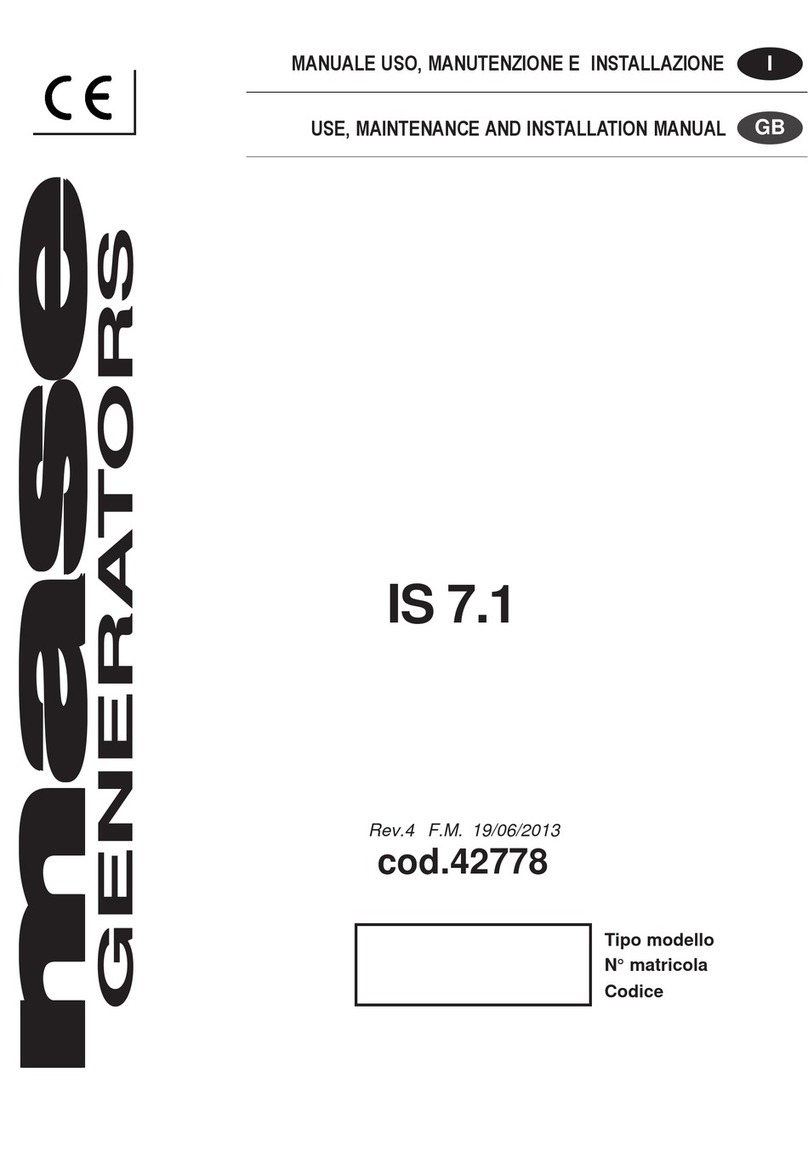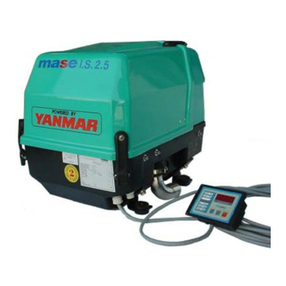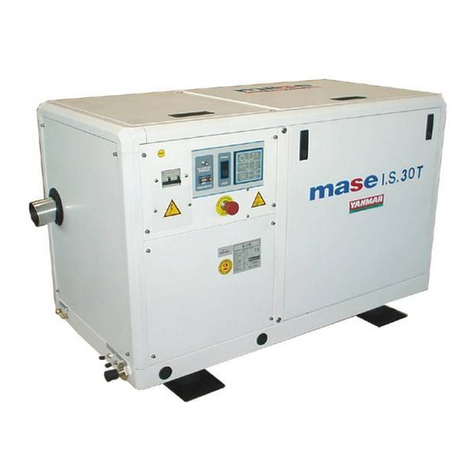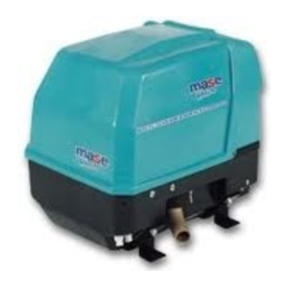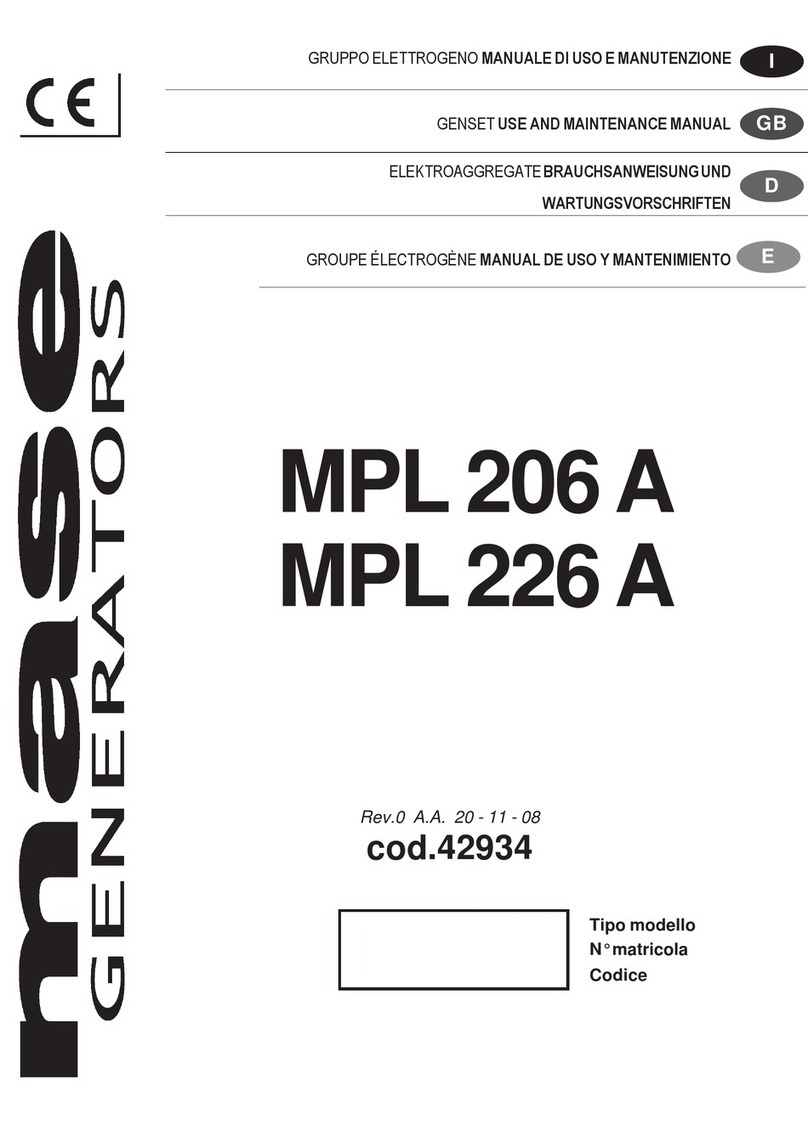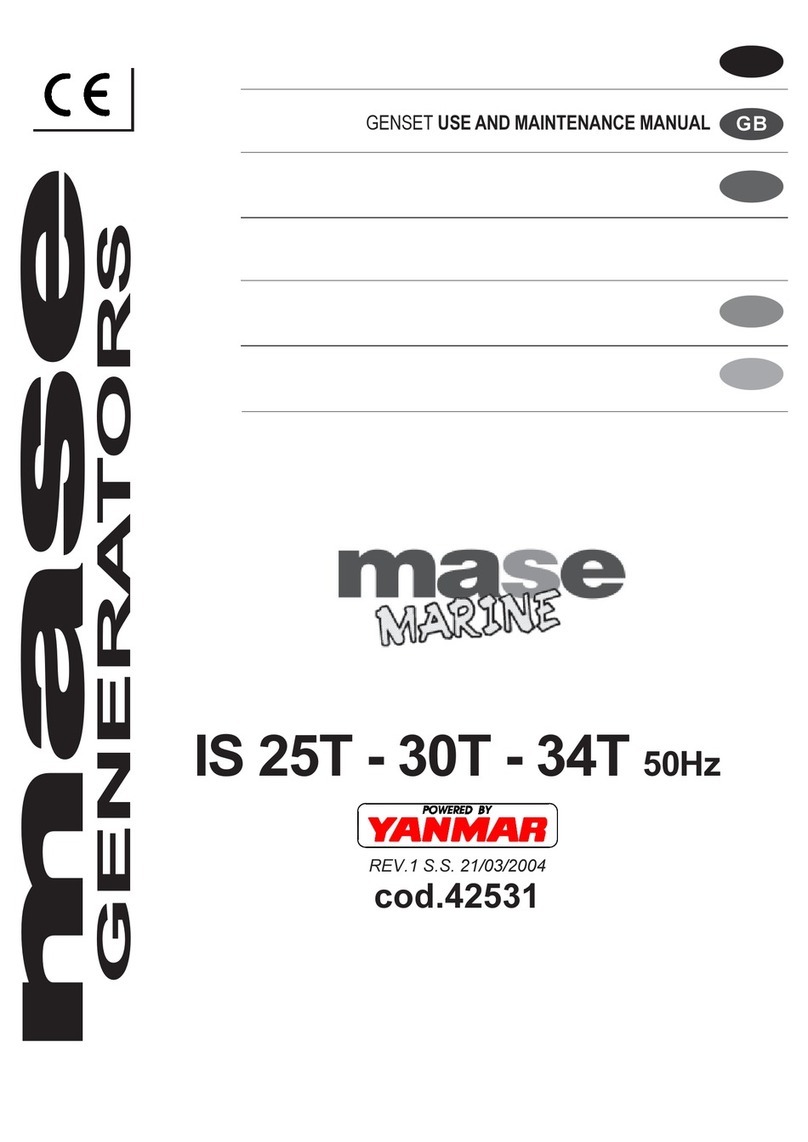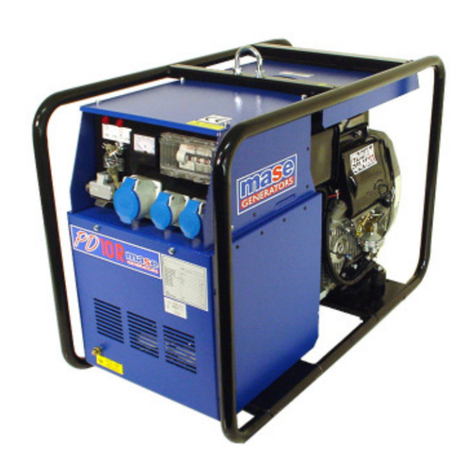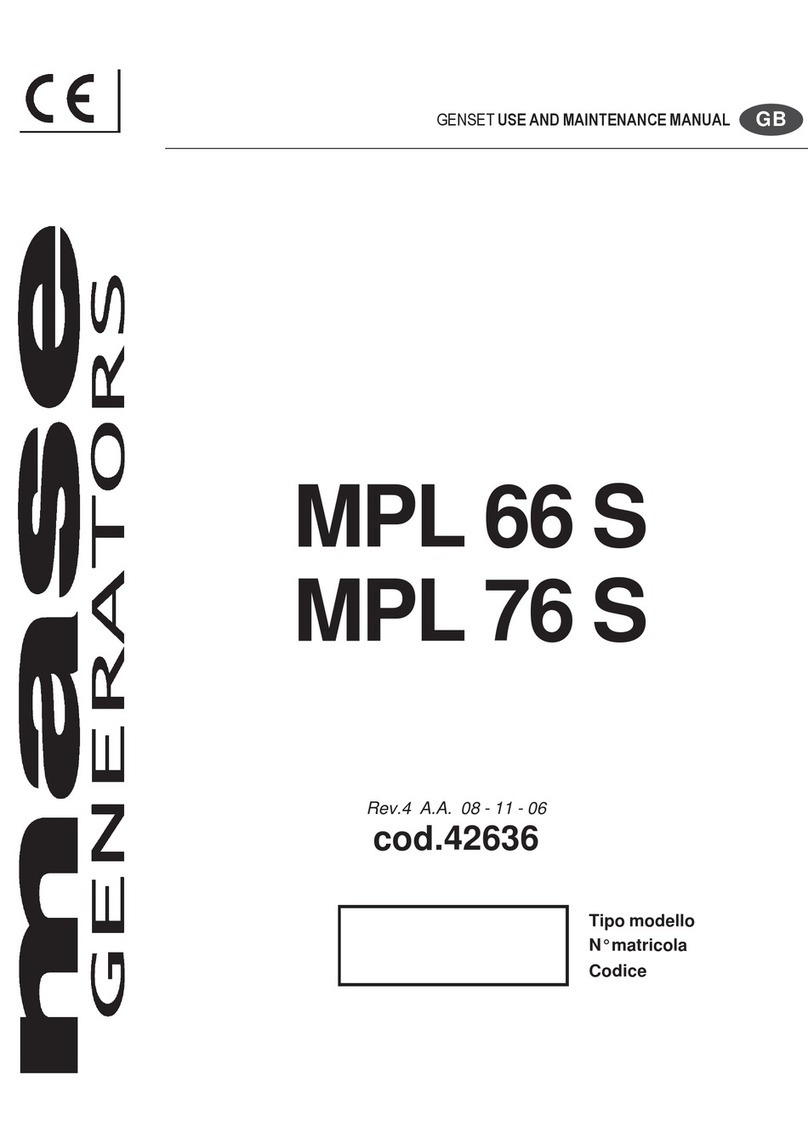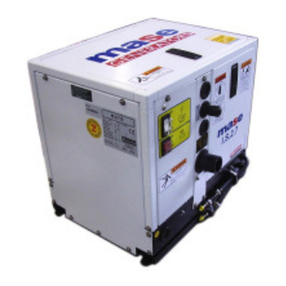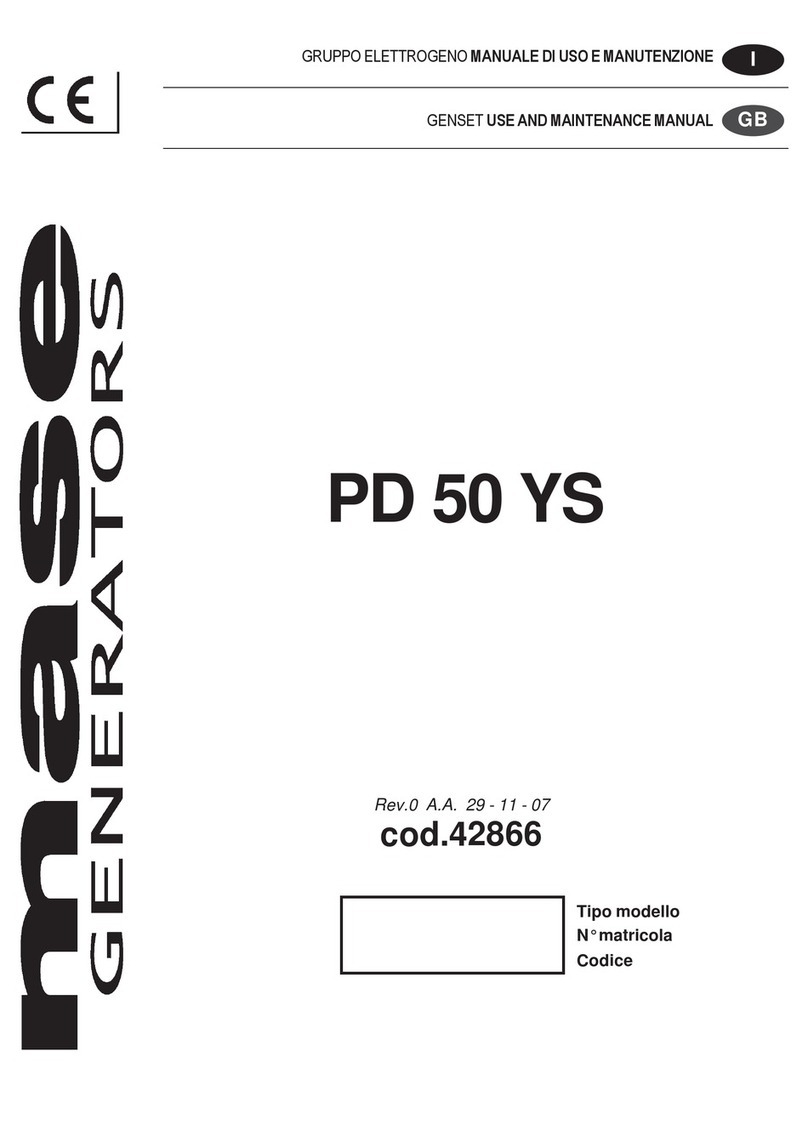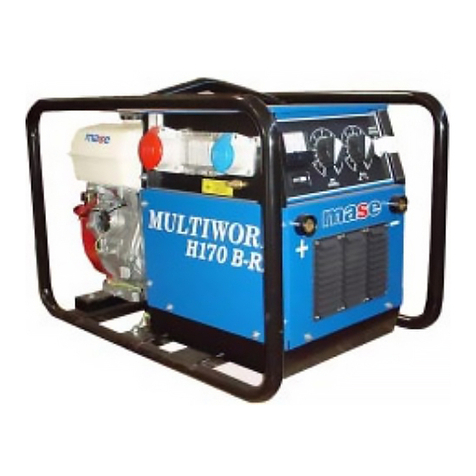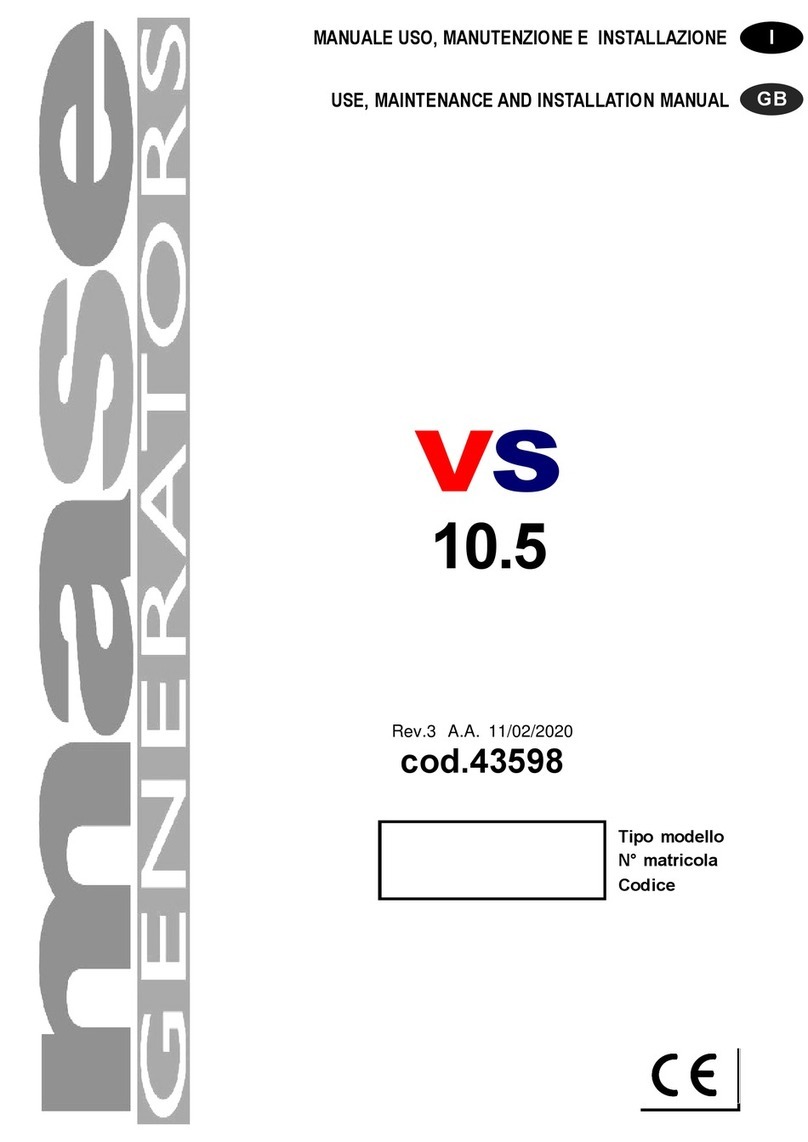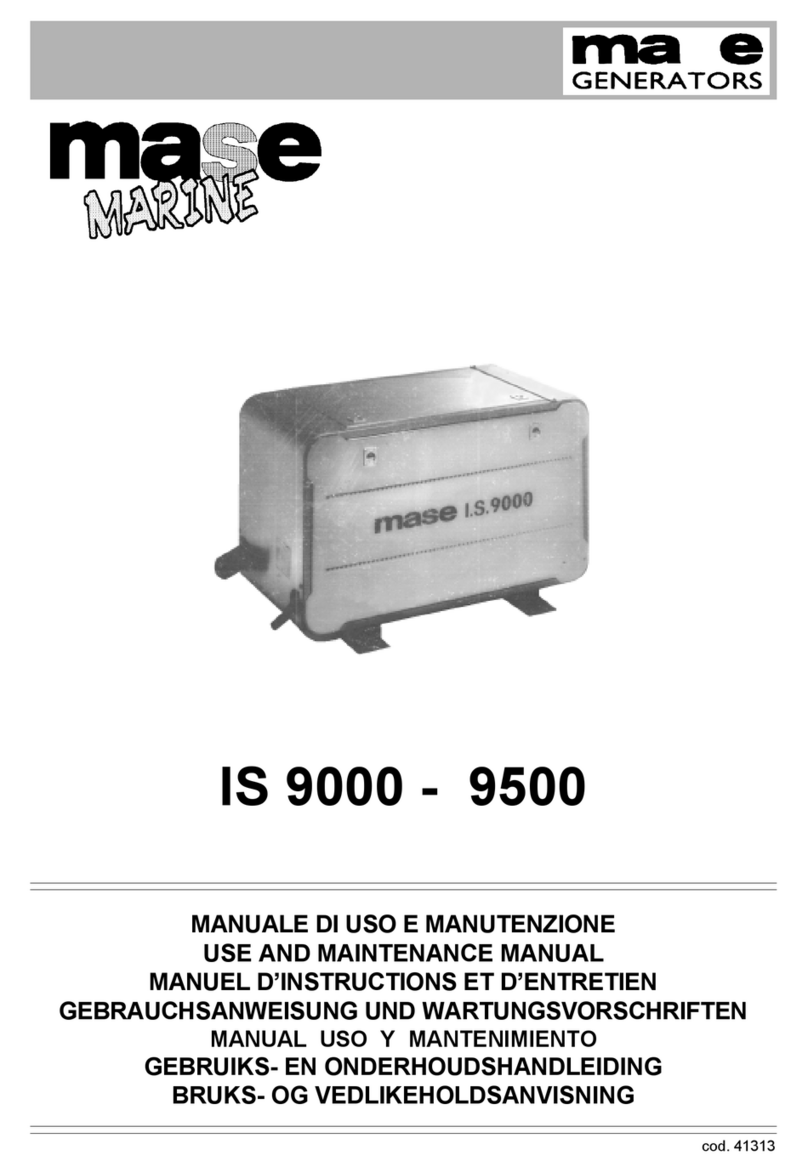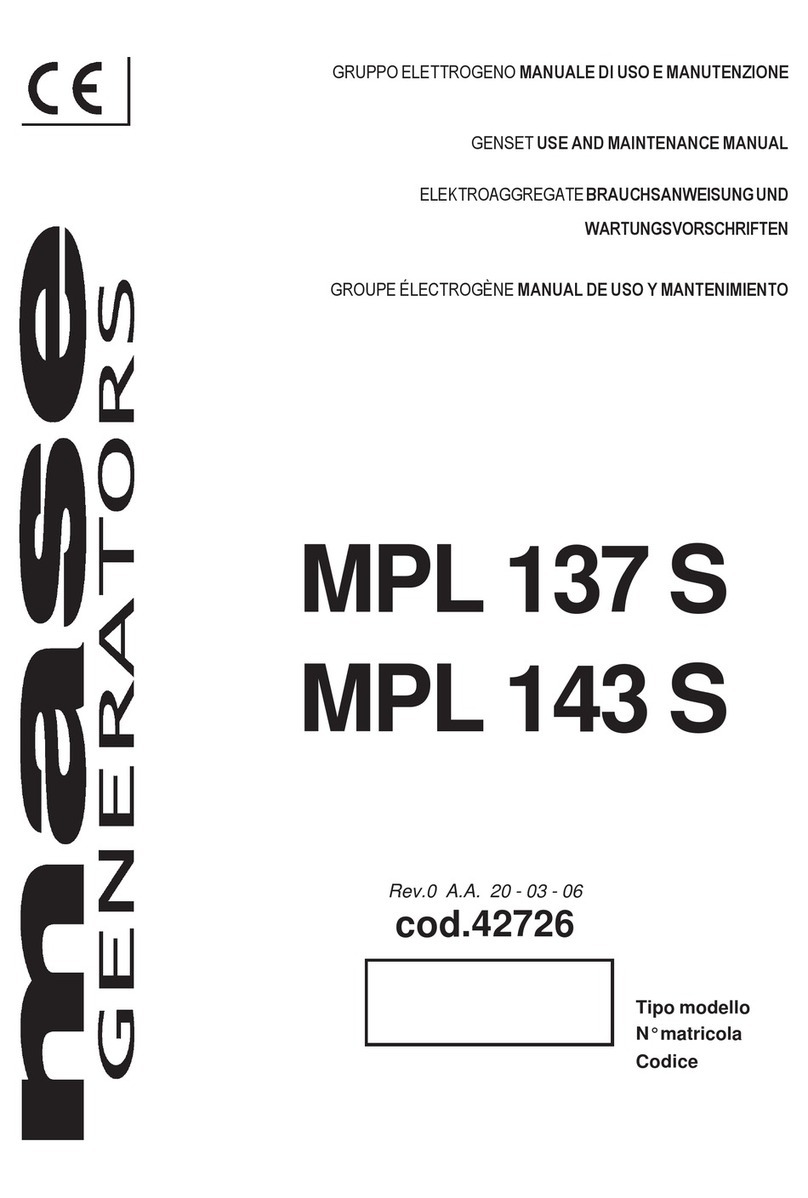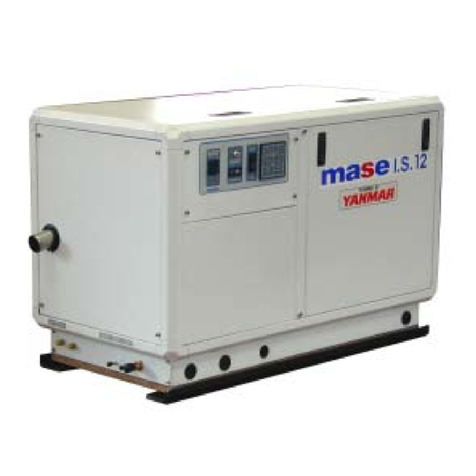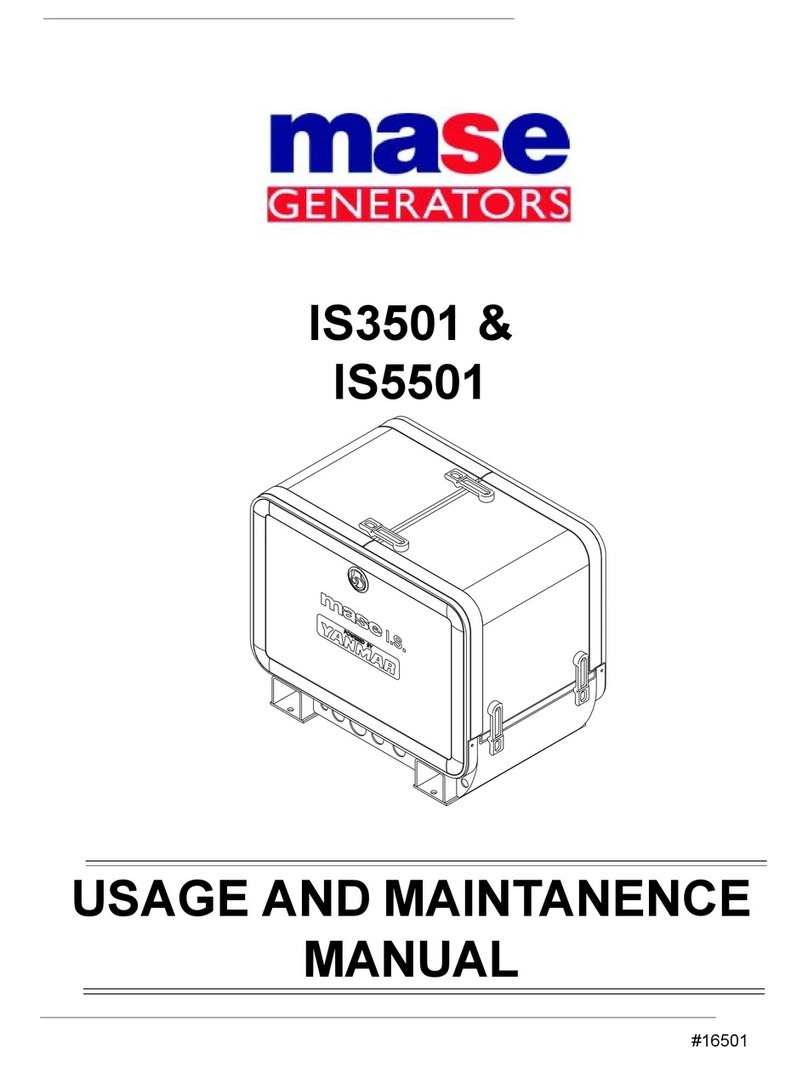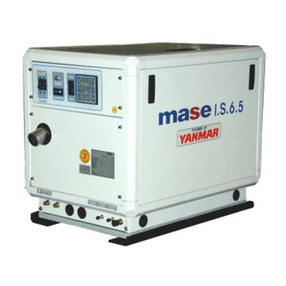
FMMASE
10
I
GRAZIEPERAVERESCELTOUNPRODOTTOMASE.
Il presente libretto contiene le più importanti informazioni
per un corretto uso del generatore. Per la sicurezza e
soddisfazione del Cliente e per l’ affidabilità del gruppo
elettrogeno sono essenziali una corretta installazione e
verifica prima della consegna. Un controllo non accurato
o un errore di montaggio possono compromettere l’
efficienza del generatore e pregiudicare la sicurezza
dell’ utente. Tutte le informazioni e illustrazioni di questo
manuale si riferiscono al modello esistente al momento
della pubblicazione. Per eventuali ulteriori informazioni
La preghiamo di rivolgersi al più vicino centro di assi-
stenza MASE che sarà lieto di assisterla.
La MASE si riserva il diritto di apportare modifiche senza
darne alcun preavviso. Nessuna parte o illustrazione di
questo manuale può essere riportata senza autorizza-
zione.
MASE GENERATORS S.p.A.
1) NORME DI SICUREZZA
- Leggere attentamente tutte le informazioni contenute
in questo opuscolo: esse sono fondamentali per una
corretta installazione ed utilizzo del gruppo e per essere
in grado di intervenire tempestivamente in caso di ne-
cessità.
- Non consentire l’ uso del gruppo a persone non
competenti o che non siano state istruite adeguatamen-
te.
- Non consentire a bambini od animali di avvicinarsi al
gruppo elettrogeno in funzione.
- Non accedere al generatore o al cruscotto di comando
a distanza con mani bagnate essendo il generatore una
potenziale fonte di shock se male utilizzato.
- I gas di scarico contengono monossido di carbonio ed
altri residui nocivi all’ organismo: è importante non fare
mai funzionare il gruppo in ambienti chiusi.
- Non far funzionare il gruppo in vicinanza di luoghi con
pericolo di esplosione o di incendio.
- Eventuali controlli sul gruppo elettrogeno vanno ese-
guiti a motore spento; controlli sul gruppo in funzione
vanno effettuati solo da personale specializzato.
- Il rifornimento di carburante va eseguito a motore
spento.
- Il collegamento a terra del gruppo va fatto con cavo di
rame di sezione non inferiore a 6 mmq.
Nell’ utilizzo del generatore occorre tener presente
che nei luoghi bagnanti o molto umidi e nei luoghi
conduttori ristretti esiste l’ obbligo del rispetto degli
articoli 313 e 318 del D.P.R. 27/04/55 nr. 547, nonché
del Cap. 11, Sez. IV della norma C.E.I. 64-8.
2) CARATTERISTICHE TECNICHE
3) COMPOSIZIONE DEI GRUPPI
I gruppi della serie FORMULA sono generatori sincroni
di c.a. monofase e/o trifase composti essenzialmente
da:
- Un telaio portante (Fig.1 Rif.1).
- Un alternatore sincrono autoeccitato ed autoregolato
(Fig. 1 Rif.2).
- Un motore (Fig.1 Rif.3) 4 tempi a benzina.
- Un cruscotto comandi (Fig.1 Rif.4) composto da:
1) Termico generale
2) Presa 2P+T
3) Interruttore generale
4) Spia funzionamento
5) Interruttore Stop
6) Morsetto C.C. 24V
7) Morsetto C.C. 12V
8) Morsetto C.C. (-)
9) Fusibile circuito C.C.
10) Contaore
11) Presa 3P+T
12) Termico 3 ~
13) Termico parziale 1~
GENERATORE 2500 M 4000 M 5600 M 6000 T 8000 M
MOTORE Brigss &
Stratton
Brigss &
Stratton
Brigss &
Stratton
Brigss &
Stratton
Brigss &
Stratton
TIPO 132232 195432 254422 254422 303400
Nr. CILINDRI 11112
CILINDRATA c.c 206 319 400 400 480
POTENZA Hp (Na) 3.2 5.1 7.5 7.5 10.4
CONSUMO Lt/h 1.6 1.7 334
CAPAC. SERB. Lt 312 12 12 9
GIRI /1' 3000 3000 3000 3000 3000
POT. CONT. (380 V) - - - 5000 -
POT. CONT. (220 V) 1800 3000 4400 3000 6300
ATTENZIONE


